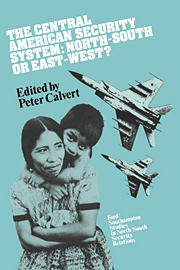Book contents
- Frontmatter
- Contents
- Notes on contributors
- Preface
- Map of the Caribbean Basin area
- Part I The problem at the interstate level
- Part II The problem at the state level
- Part III Solutions
- 9 The militarization of the Commonwealth Caribbean
- 10 Pacification, security and democracy: Contadora's role in Central America
- 11 Problems and policies: an agenda for the 1990s
- Index
10 - Pacification, security and democracy: Contadora's role in Central America
Published online by Cambridge University Press: 15 October 2009
- Frontmatter
- Contents
- Notes on contributors
- Preface
- Map of the Caribbean Basin area
- Part I The problem at the interstate level
- Part II The problem at the state level
- Part III Solutions
- 9 The militarization of the Commonwealth Caribbean
- 10 Pacification, security and democracy: Contadora's role in Central America
- 11 Problems and policies: an agenda for the 1990s
- Index
Summary
Since January 1983 the Contadora group, formed by Mexico, Panama, Colombia and Venezuela, has tried to mediate between the Central American countries and to find a negotiated solution to the conflicts in the region which threatened regional (or even global) peace and security. And yet, after more than four years of negotiations the Contadora group is still far from achieving its main objective. However, during this time the Contadora process has occupied a central role in attempts at mediation and compromise among hostile neighbours. It has kept the dialogue between the Central American countries going and has provided the forum for negotiations. In fact, this is probably the most valuable contribution Contadora has rendered the Central American countries: continued communication among themselves and, with it, the self-assurance that differences could be resolved by negotiations.
The peacemaking process started by Contadora, however, seems to have been overtaken by events and situations which, ironically, Contadora itself helped to create. The Central American countries acting in parallel or independently of Contadora, began playing a much more active role in launching initiatives aimed at the same objectives as Contadora: the easing of regional tensions through dialogue and negotiation.
The purpose of this chapter is to examine the evolution of the Contadora process, focusing particularly on the ways it tried to resolve political and security problems. The obstacles to achieving consensus around Contadora stalled the process and led the Central Americans to take more assertive actions.
- Type
- Chapter
- Information
- The Central American Security SystemNorth-South or East-West?, pp. 155 - 176Publisher: Cambridge University PressPrint publication year: 1988



